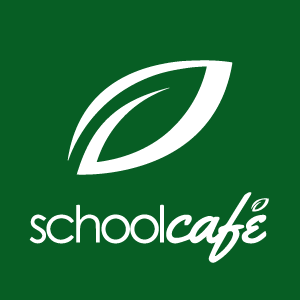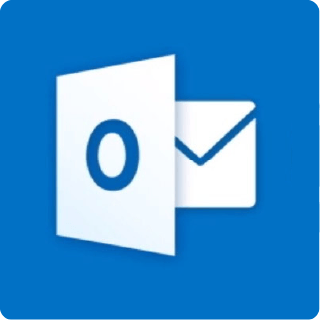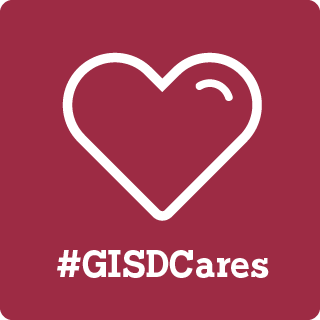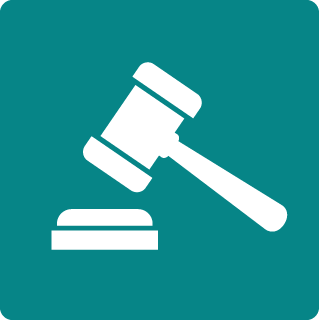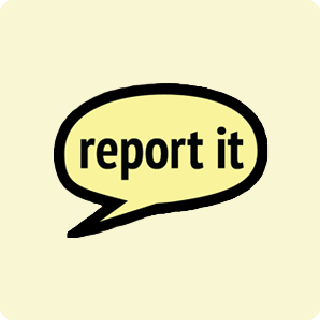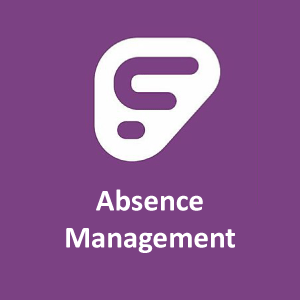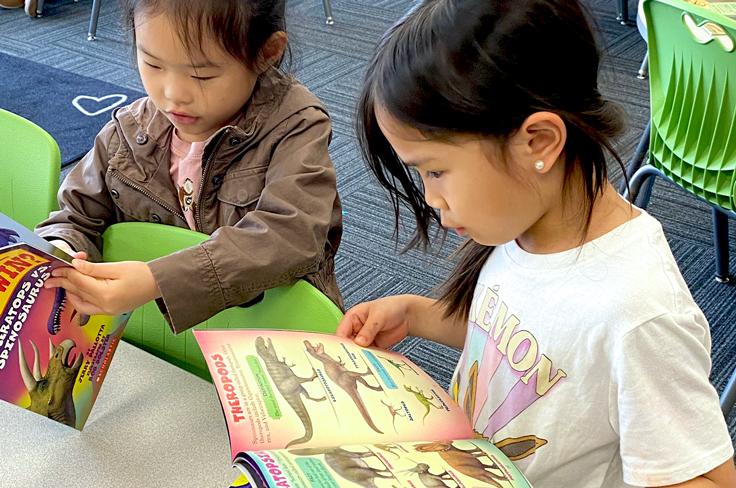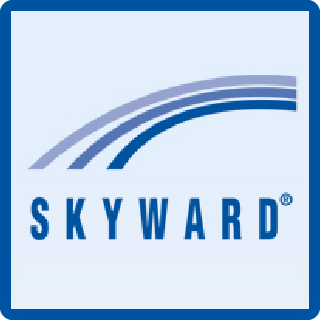
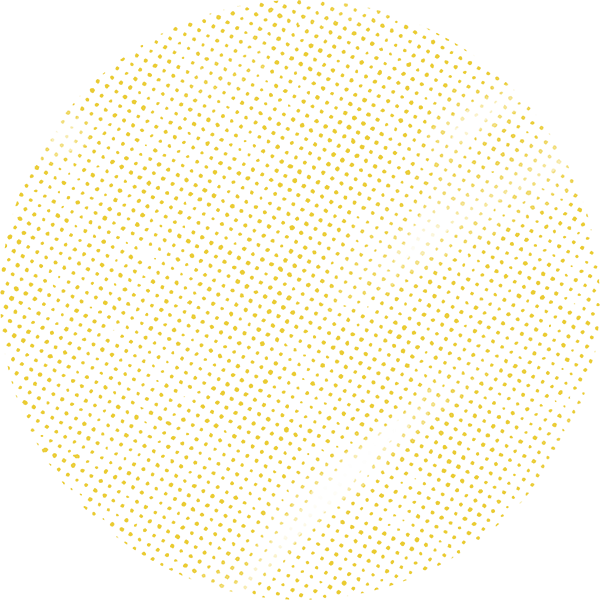

Library Book Selection Criteria
Learn how our district selects its library books.

Our process for choosing books
Our district has outlined specific standards that books must meet to be in our libraries. These standards align with Board Policy EF Local.
Books must meet all five criteria to be selected:
- Integral to the instructional program
- Reflects the interests and needs of the students and faculty
- Appropriate for the reading levels and understanding of students
- Has literary or artistic value and merit
- Presents information with the greatest degree of accuracy and clarity
Looking for a printable version? See the Guide to GISD Library Selection Criteria.
Criteria details
Expand AllIntegral to Instructional Program
Books in the library are designed to support content knowledge, process skills, or both. Books whose main subjects do not appear directly in the TEKS are designed to support the development of reading and thinking skills. There is a correlation between interest-based reading selections and academic performance. Research shows that students who read books of interest read more often and perform better in reading than their counterparts. Library books are diverse in topics, themes, genres, formats, and characters so all students can find books of interest to develop their reading skills.
Reflect the Interests and Needs of the Students and Faculty
Librarians use information from their needs analysis such as circulation data, student and faculty suggestions, curricular topics, and current events to identify student and faculty needs. Not all books may be of interest to all students, but all students should find something of interest to them and see themselves and others reflected in the materials.
Appropriate for the Reading Levels and Understanding of Students
A book needs to have two professional reviews* for at least one of the grade levels served (or a level below) in order to meet this criteria, with the exception of early childhood campuses which may purchase books with reviews including birth through 1st grade.
- YA may only be purchased at secondary campuses, and AD may only be purchased at schools with 12th-grade students.
- If reviews contain age recommendations that span multiple levels (ex. 5th-8th grade or YA), the text of the review should be used to determine the target audience.
- If two professional reviews can be found, the youngest age level range should be used as the target audience. If three or more professional reviews can be found, the most used age range should be used.
*Acceptable professional library review sources include Booklist, Bulletin of the Center for Children’s Books, Horn Book, Kirkus, School Library Journal, & VOYA. If multiple reviews are available, all reviews must be read in their entirety prior to making a decision.
Included because of their Literary or Artistic Value and Merit
A book needs to have at least one professional review* that favorably addresses the quality of the work. Use of language, character and plot development, illustrations and photographs, reader engagement and readability, and technical qualities all speak to literary or artistic value and merit.
Present Information with the Greatest Degree of Accuracy and Clarity
A book needs to have two professional reviews* that favorably addresses the book’s accuracy and clarity. Author’s reputation, potential bias, credentials, and approach to subject matter may be considered. Balanced presentation of opposing issues in nonfiction must be presented either in the individual book or with the inclusion of multiple books within a library. Fiction must be considered “authentic literature”, and if the book is about or representative of a particular group, the author’s belonging to that group may be considered.
*Acceptable professional library review sources include Booklist, Bulletin of the Center for Children’s Books, Horn Book, Kirkus, School Library Journal, & VOYA. If multiple reviews are available, all reviews must be read in their entirety prior to making a decision.
Procedure when no professional reviews are available
Some but not all types of materials may be purchased when professional reviews are not available. If eligible for purchase, these items must still meet all 5 selection criteria. Librarians may use the table below to determine whether they can order an item and, if so, should err on the side of caution when making decisions.
| Type of Literature | Appropriate for the Reading Levels & Understanding of Students | Literary or Artistic Value and Merit & Present Information with Accuracy and Clarity |
|---|---|---|
| Nonfiction (Neither formulaic nor literary) |
If no professional reviews can be located, the publisher designated age range may be used. Adult (AD) designated content may only be purchased at campuses serving 12th grade students. Young adult (YA) may only be purchased at secondary campuses. If the publisher designated age range spans multiple levels, the librarian must use both the publisher designated age range and research on the book to determine the primary target audience. | Librarians must research to determine whether the item meets standards of literary/artistic value and merit as well as accuracy and clarity. The librarian must carefully weigh the following when making a purchasing decision.
|
| Manga (secondary) | Librarians must research and use the publisher-specific rating scale to determine the intended audience for the content.
|
Secondary librarians may consider purchasing Manga by leveraging sites such as the ones listed on the American Library Association website in order to research individual book content and determine whether it meets all board policy aligned selection criteria. Review & Information resources: |
| Literary Fiction & Literary Nonfiction | May not be purchased (includes memoirs, biographies, & poetry). | |
| Formulaic Fiction Series |
Elementary - If a positive professional review exists for a book in a formulaic fiction series, it will suffice for the rest of the series as long as the characters do not out age the intended audience. |
|
| Formulaic Nonfiction Series | If a positive professional review exists for one of the books in a formulaic nonfiction series, it will suffice for the rest of the series. | |
| Items in Other Languages | If a professional review cannot be found for a specific translation, a book may still be purchased if the English language version meets all selection criteria. |
|
| Items Originally Published Before 1970 | Professional reviews for classic books considered part of the “literary canon” and religious or historical texts may not be available. In these instances, the book may still be purchased if research indicates it meets all GISD selection criteria. Librarians should consider whether or not items are in the public domain and degree of student appeal in their decisions. |
Definitions
- Adult (AD)
- The adult, or AD, audience designation used by publishers is not a reflection of content but of the audience for whom the content is written. Books that were not specifically written for children or young adults fall into this category.
- Authentic Literature
- Authentic literature refers to texts written in the natural language of the authors with an audience beyond schools (ie. the general public). They are not written with a controlled vocabulary and/or to achieve a particular readability. Sometimes called "Trade Books", these works are written to emotionally engage the reader.
- Formulaic Fiction Series
- Found at the elementary leve'. Each book in a formulaic fiction series contains the same characters, the same plot structure, and does not develop in-depth and complexity or tackle more mature content as the series progresses (ex. Magic Tree House is a formulaic series, while Harry Potter is literary). Typically only a few books in a formulaic series are reviewed.
- Formulaic Nonfiction Series
- Each book in a formulaic nonfiction series contains the same organizational structure, elements, reading level, and subject approach. Typically only a few books in a formulaic series are reviewed.
- High-Low (HiLo)
- HiLo books are typically written to be of high interest to secondary students while being written at an early elementary level. Elementary librarians should exercise caution when considering a HiLo novel.
- Literary Nonfiction
- Literaty nonfiction authors use techniques typically reserved for fiction to present informational content in creative and engaging ways.
- Manga
- Manga refers to a style of Japanese comics/graphic novels. This type of literature is not reviewed in professional library review journals.
- Professional Library Review Journals
- These journals are recognized as reputable selection tools within the field of librarianship. Acceptable professional library review journals include Booklist, Bulletin of the Center for Children's Books, Horn Book, Kirkus, and School Library Journal. Although out-of-print, VOYA may be used for older items.
- Public Domain
- Creative works that are not protected by intellectual property laws. In the case of library books, these are books with expired copyright dates. Books in the public domain are generally accessible online.
- Young Adult (YA)
- Books written for grades 6-12 are designated as Young Adult (YA). Common themes in YA realistic fiction include friendship, getting into trouble, self-identity, coming of age, romantic and sexual interest, and family life. The text of a YA review is used to determine whether the title is suitable for middle school, high school, senior high school, or a combination.
Reviews
- Elementary: Reviewed for grades PreK-5. Use caution when considering books reviewed for grades 5-8; books coded YA may not be added.
- Middle School: Reviewed for grades 6-8 or below. Use caution when considering books reviewed for grades 7-12.
- High School: Reviewed for grades 9-12 or below. Use caution when reviews state explicit or mature material.
- Books coded as AD: Craft books or other non-fiction. Carefully consider prior to adding to secondary collections.
- The age of the main character(s) is a good guideline for determining the target audience.



